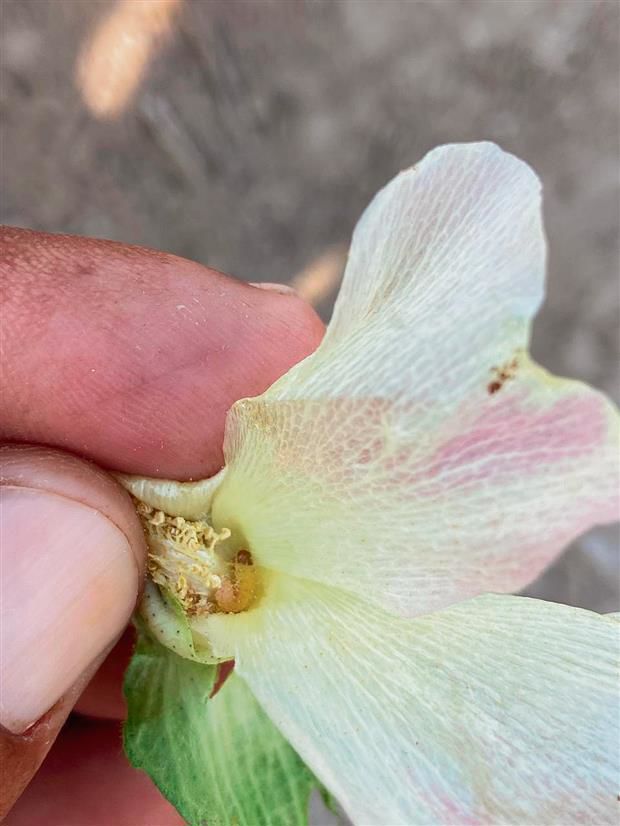Cotton under pink bollworm attack in Mansa, Fazilka, Abohar; farmers worried
Ruchika M Khanna
Chandigarh, July 14
The dreaded pink bollworm has hit the cotton crop in Mansa, Fazilka and Abohar areas, raising the hackles of the state Agriculture Department.
Though the pest attack is said to be below the economic threshold level (ETL), cotton growers, on the recommendation of Agriculture Department officials, have started extensive spraying of pesticides to deal with the situation. Department officials told The Tribune that the insect had been spotted on plants being cultivated in villages bordering Rajasthan and Haryana.
At present, cotton crop in Sriganganagar, Anupgarh and Hanumangarh districts of Rajasthan is stated to be under pink bollworm attack. In some of the areas, farmers have reportedly started ploughing back cotton plants into the fields.
Talking to The Tribune, Balkar Singh, a cotton cultivator from Khiali Chahianwali village in Mansa, said pink bollworm was spotted in some fields in his village. “Flowering is yet to begin, but the pest attack has already set in. We have already done two rounds of insecticide spraying, which has increased our input cost by Rs 2,000 per acre for each spray. I have already incurred an additional expenditure of Rs 18,000 on insecticide sprays on nine acres,” he said. They were also grappling with whitefly attack, he added. Last year also, a large number of cotton growers in the Malwa region had suffered losses because of the pink bollworm attack. They had cultivated cotton immediately after harvesting moong. Moong being a natural habitat for pink bollworm, the insect remained in the soil after the legume was harvested and later attacked the cotton crop sown in those fields. Subsequent heavy rainfall aggravated the pest attack further. According to reports, nearly 60 per cent of the cotton crop in the state was damaged last year. Pink bollworm had played havoc with the cotton crop in 2021 also. Many experts believe that the solution to the frequent pest attacks was to give fresh seeds to farmers, and not allow them to use old seeds.
Gurpreet Singh Sandhu, who is cultivating cotton in Patti Sadiq village of Abohar, said last year, his yield of cotton fell to two quintals per acre, from a standard yield of 8-10 quintals per acre.
“This year again, the crop is under pink bollworm attack and I have started multiple insecticide sprays, as recommended by the scientists of Punjab Agricultural University. But the prospects do not seem bright this year as well. Thank God, I had reduced the area under cotton, otherwise my losses would have been much higher,” he said.
It is because of repeated cotton crop failures that farmers in Punjab have started shunning this crop. As against a target of sowing cotton on 2 lakh hectares, only 99,720 hectares is actually under cotton crop this year. Of this area, 60,000 hectares under cotton crop has been adopted by the Agriculture Department for conducting field trials and all insecticides are being provided by the department.
Extensive spraying of pesticides on
- The insect has been spotted on plants being cultivated in Punjab villages bordering Rajasthan and Haryana
- The pest attack is said to be below the economic threshold level (ETL), but farmers have started extensive spraying of pesticides
- Experts believe that the solution to the frequent pest attacks is to give fresh seeds to farmers, and not allow them to use old ones
Pests that attack cotton
Pink bollworm, also called gulabi sundi in local parlance, has been wreaking havoc in cotton fields in Punjab, Haryana and Rajasthan. It is believed to be resistant to first-generation transgenic Bt cotton
Whitefly, also called chitti makhi, thrives in warm and tropical climate; it is found on the leaves of cotton plants; honeydew secreted by it gets deposited on cotton fibre, thus affecting the cotton quality
Geared up to deal with situation
The cotton growing villages bordering Rajasthan and Haryana are affected. At many places, we have already asked cultivators to plough back the plants three feet under the soil. Our teams are helping the farmers. Two separate teams, both headed by a Joint Director each, will start visiting affected villages from Monday and the situation will be brought under control. — Jaswant Singh, director (agriculture)









